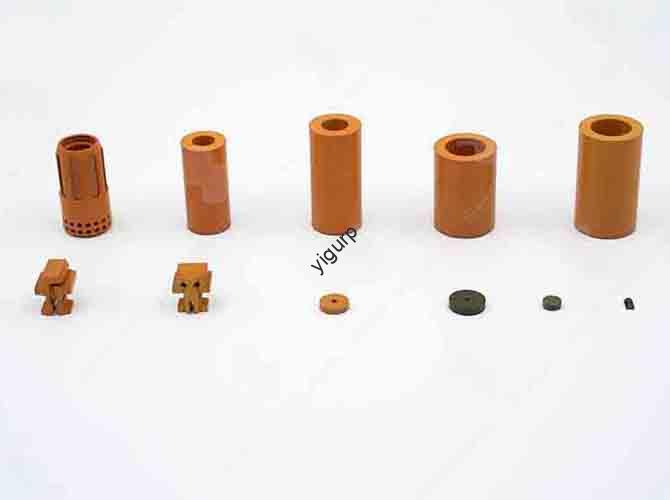If you’ve ever wondered how precise metal or plastic parts are made for industries like aerospace, automobile, ou dispositifs médicaux, the answer often lies in the Processus d'usinage CNC. This computer-controlled manufacturing method turns digital designs into physical products with unmatched accuracy. But how does it work step-by-step? And what do you need to know to ensure a smooth, processus efficace? Let’s break it down clearly.
1. Core Stages of the CNC Machining Process: Une ventilation étape par étape
The CNC machining process isn’t just “press a button and wait”—it’s a structured sequence of 6 étapes clés. Below is a detailed table to help you understand each step, its purpose, and key tools:
| Scène | Key Task | But | Essential Tools/Software |
| 1. Conception de produits | Create a 3D model of the part | Ensure the part meets size, forme, and function requirements | Logiciel CAO (Par exemple, Solide, Autocad) |
| 2. Sélection des matériaux | Choose the right raw material | Match material properties (force, durabilité, coût) to the part’s use | Métal (aluminium, acier), plastique (Abs, Jeter un coup d'œil), bois |
| 3. Rédaction de programmes | Convert the 3D model into machine code | Tell the CNC machine comment to cut/mill the part | Logiciel CAM (Par exemple, Mastercam, Fusion 360) |
| 4. Configuration de la machine | Prepare the CNC machine for operation | Secure the workpiece and tools, adjust parameters | Workholding clamps, outils de coupe (endmills, forets), étriers |
| 5. Opération d'usinage | Run the program to shape the part | Turn raw material into the designed part | Moulin CNC, tour, ou routeur |
| 6. Inspection & Correction | Check the part for accuracy | Ensure the final product matches the design | Micromètres, testeurs de rugosité de surface, Cmm (Coordonner la machine à mesurer) |
2. Why Each Stage Matters: Common Problems and How to Avoid Them
Skipping or rushing a stage can lead to costly mistakes—like a part that’s too small, a broken tool, or a product that fails in use. Let’s use a chaîne de cause à effet to see how each step impacts the end result:
- Problème 1: Poorly designed 3D models (Scène 1) → The CNC machine follows bad data → The part doesn’t fit with other components.
Solution: Use CAD software with “design for manufacturability (DFM)” checks to fix flaws early.
- Problème 2: Wrong material choice (Scène 2) → A plastic part meant for high heat melts during use → Product failure.
Solution: Demander: Will the part be exposed to pressure, changements de température, ou produits chimiques? Choose materials accordingly (Par exemple, titanium for medical implants, aluminum for lightweight automotive parts).
- Problème 3: Incorrect program code (Scène 3) → The machine cuts too deep or misses a feature → Wasted material and time.
Solution: Test the program with a “dry run” (pas de matériel) to catch errors before machining.
3. CNC Usining VS. Usinage traditionnel: What Makes CNC Better?
Tu pourrais penser: Why use CNC instead of traditional manual machining? Let’s compare the two with a contrast table to highlight key advantages:
| Facteur | Usinage CNC | Usinage traditionnel |
| Précision | ± 0,001 pouces (haute précision) | ±0.01 inches (dépend de la compétence de l'opérateur) |
| Vitesse | 2–5x faster for complex parts | Ralentissez, especially for detailed designs |
| Cohérence | Identical parts every time (no human error) | Variations between parts (operator-dependent) |
| Travail | 1 operator can run multiple machines | 1 Opérateur par machine |
4. Key Tips to Optimize Your CNC Machining Process
Want to make your CNC process more efficient and cost-effective? Voici 5 actionable tips, presented as a list for easy reference:
- Optimize the machining path: Use CAM software to reduce unnecessary tool movements (saves 10–20% of time).
- Choose the right cutting tool: A carbide tool lasts 3x longer than high-speed steel (reduces tool changes).
- Monitor cutting speed: Too fast = tool wear; too slow = wasted time. Follow material-specific speed guides (Par exemple, 1,200 RPM for aluminum).
- Pre-inspect materials: Check for cracks or unevenness in raw materials to avoid machining defective parts.
- Train operators: Even advanced CNC machines need skilled staff—train teams to troubleshoot small issues (réduit les temps d'arrêt).
Yigu Technology’s Perspective on CNC Machining
À la technologie Yigu, Nous avons soutenu 500+ clients dans l'optimisation de leur Processus d'usinage CNC Au cours de la dernière décennie. We believe CNC isn’t just a tool—it’s a bridge between innovation and production. Many clients initially struggle with material selection or program errors; our solution is to integrate DFM checks into the design stage and provide real-time machining monitoring. This approach cuts waste by 30% on average and ensures parts meet strict industry standards. For small-batch prototypes or large-scale production, CNC’s flexibility makes it irreplaceable—and we’re committed to making this process accessible to every business.
FAQ
1. How long does a typical CNC machining process take?
It depends on part complexity: A simple 2-inch aluminum bracket takes 10–15 minutes, while a complex aerospace component with 50+ features can take 2–4 hours. The design and program writing stages add 1–2 days for new parts.
2. Can CNC machining handle all materials?
No—CNC works best with rigid materials like metals, plastiques, and wood. It’s not ideal for soft materials (Par exemple, mousse) or extremely hard materials (Par exemple, diamant) sans outils spécialisés. Always consult a CNC expert for material compatibility.
3. What’s the most common mistake in the CNC machining process?
Le #1 mistake is ignoring DFM (design for manufacturability) in the design stage. Par exemple, a part with a 0.05-inch internal corner might be impossible to cut with a 0.1-inch tool—leading to rework. Fixing this early saves time and money.
